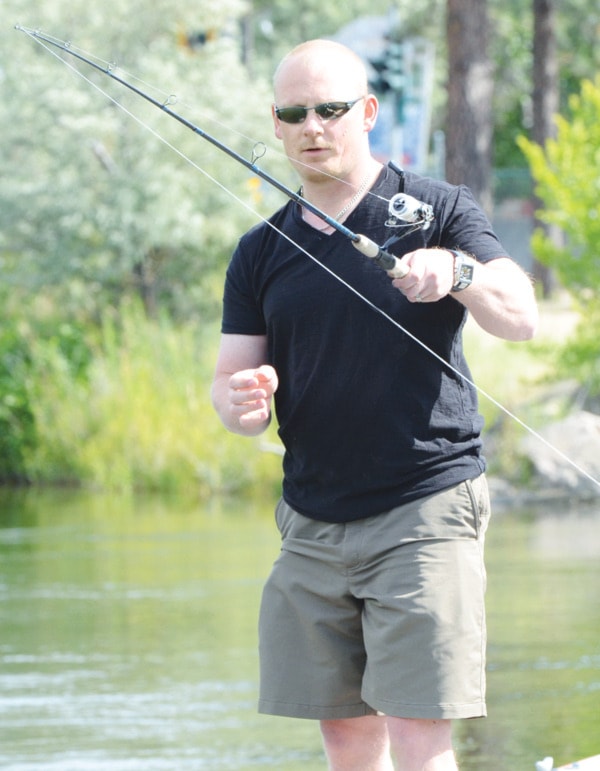This year is shaping up to be a record year for sockeye salmon returning to the Okanagan river system, but numbers are not going to be as high as they might have been.
These sockeye were spawned in 2008, when 108,000 sockeye journeyed up the river. But unlike the approximate 10-to-one return ratio observed in 2011 and 2010, when 200,000 sockeye returned, this year is only seeing about a five-to-one return ratio.
“If it was the same production that we saw in previous years, we would be seeing probably more than a million sockeye coming back,” said Howie Wright, a fisheries biologist with the Okanagan Nation Alliance, who have been leading the efforts to restore the Okanagan River salmon run. “However, it is not as productive in the ocean as it has been in recent years.”
Still, this should be a record year for sockeye, according to Wright. He said estimates are for about 440,000 fish to cross the Wells Dam, with somewhere between 250,000 to 400,000 making it to the spawning grounds, depending on water temperature and other factors.
The decline in return ratio is mirrored on runs throughout B.C., Washington and Alberta, according to a study done by Simon Fraser University. Randall Peterman, a professor in SFU’s School of Resource and Environmental Management, points out that in the 1960s, the Fraser River Stuart run had about a 20-to-one return ratio, dropping to three-to-one in the mid 2000s.
“We’re at about five-to-one, but a couple of years ago, we were a bit higher,” said Wright. “It’s still a high adult-to-adult ratio.”
Wright said the current run will probably be very similar to 2010, with increasing numbers of spawning sockeye making their way into Osoyoos Lake and the Okanagan River in early July. There will be some tribal fisheries occurring as well as a commercial fishery, and a recreational fishery is under consideration for August.
“The main difference between this year and 2010 is you will probably see some in the Penticton Channel,” said Wright. With the level of the dam at OK Falls lowered to relieve high water levels, some sockeye will be able to make the jump into Skaha Lake as they did last year.
Increasing numbers of spawning salmon moving into Skaha Lake is causing concern for local fishers, however. The juvenile sockeye, which may spend up to a year in the lake, are competing with the local kokanee juveniles for the same food source.
“We’ve seen a decline, in my opinion, of the kokanee spawning and fishing kokanee in Skaha, to the numbers and size that people are catching,” said Tom Dellamater, a member of the Penticton Fly Fishers club. “We are always concerned that the sockeye are going to be competing for food with the kokanee. At one time, it used to have the highest number of kokanee per acre feet, according to Dr. Paul Askey (fisheries biologist for the Ministry of the Environment), of any lake in the province.”
Larry Martin, acting president of the PFF, hoped more research would be done to find the right balance before allowing large numbers of sockeye to return to the lake to spawn naturally. The Penticton Indian Band and the Okanagan Nation Alliance release a large number of fry into the channel each spring, as part of a 12-year sockeye restoration program.
The OK Falls dam, Martin said, provides an ideal control device to control the sockeye.
“The idea was that Skaha Lake, with the weir, they can really control the number of fish coming in. We would like to get it right as to what the best balance will be. We don’t know what that is,” he said. “It is really critical that they follow through with some good science and determine what is best for the community in the lake.”
“We’re really pleased with the amount and type of research they are doing, but we want to know what idea they have for final numbers of them and how it is going to affect the fishery,” said Dellamater. “We are not opposed to it at all, we just want to see that the research is done fully and we come up with some kind of agreement on numbers that will be beneficial to both.”
